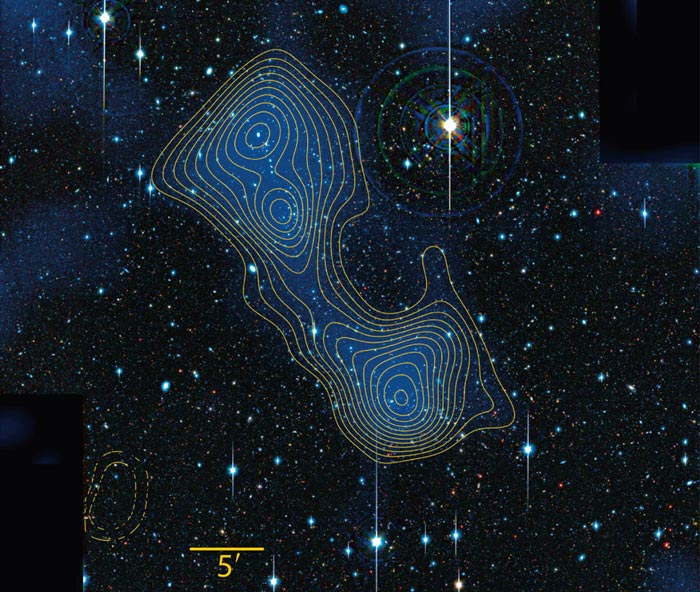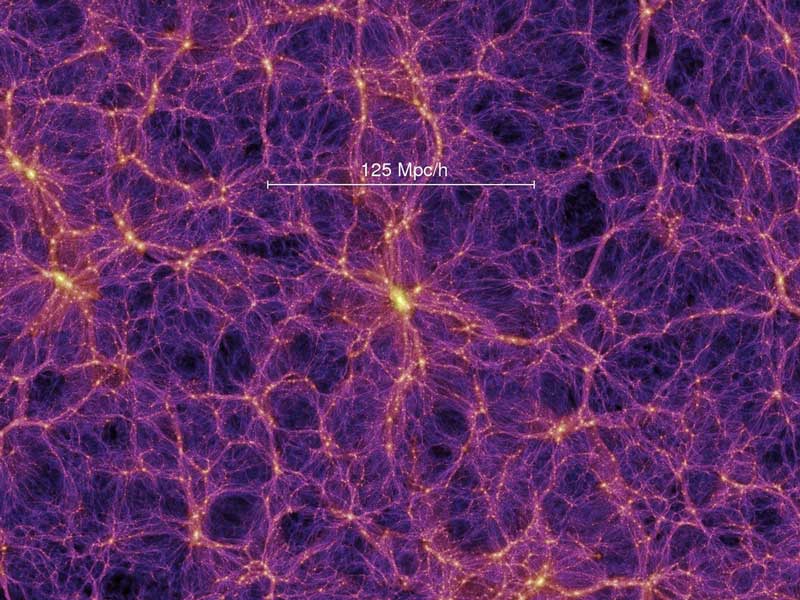Apologies for the radio silence here at Chez CK. Attention was required elsewhere. I've noticed a steady trend of people visiting this site each day (super exciting), which makes me feel guilty enough to make it up to you best I can. We'll start with a little bit of news that was overshadowed by the "particle just like the Higgs but we're only 99.9999% sure it's the Higgs which isn't sure enough" discovery.
You've probably seen this picture make its rounds on ye olde internetes. One is of neurons, the other is a simulated construction of the universe on an intergalactic scale. I'm not here to compare them, but it's the most popular picture I know of that shows a distinct feature of the arrangement of galaxies - the filament structure between superclusters.
These filaments have been known for decades - I'm not sure when they were first spotted, but I'm sure it was in a galaxy survey not unlike this one:
Where the redshift of galaxies is used to to determine distance. This foamy, sponge-like structure is sometimes called the cosmic web, because everything astronomers name is badass.
This is not the type of thing light matter will tend to do on its own. The Lambda-Cold (cold meaning slow enough to be non-relativistic) Dark Matter
model posits that dark matter started in the universe as a web that light matter was attracted to, and thus began to collect along these filaments. The distribution of dark matter wouldn't behave like the matter we're familiar with; it doesn't radiate photons so there's no temperature changes, it doesn't interact with electromagnetic fields, so it wouldn't bounce and jostle, or form molecules, and so on.
Anyhoos! We
found a filament. The information came out at the same time as the Higgs announcement, so it got little play, but it's another brilliant discovery all the same.
 |
| (Physics World) |
This is an image of the gravitational lensing of two galactic clusters, Abell 222 and Abell 223, and the lensing in between them. This connecting lens also emits x-rays characteristic of hot gas, which would be expected to form along the filaments, but is too light to bend light as strongly as indicated.
It's not definitive, it doesn't completely eliminate competing models, it's no 99.9999% certainty, but discoveries in science often aren't. A model is by it's nature created to explain a wide variety of phenomena, so it takes a wide variety of phenomena to verify. And this is a great step in that direction. Another piece of the puzzle, a little bigger than the others.




Is it possible to project dark matter onto a surface exposed to day light?
ReplyDeleteI am exploring an idea of a projector that manipulates dark matter.